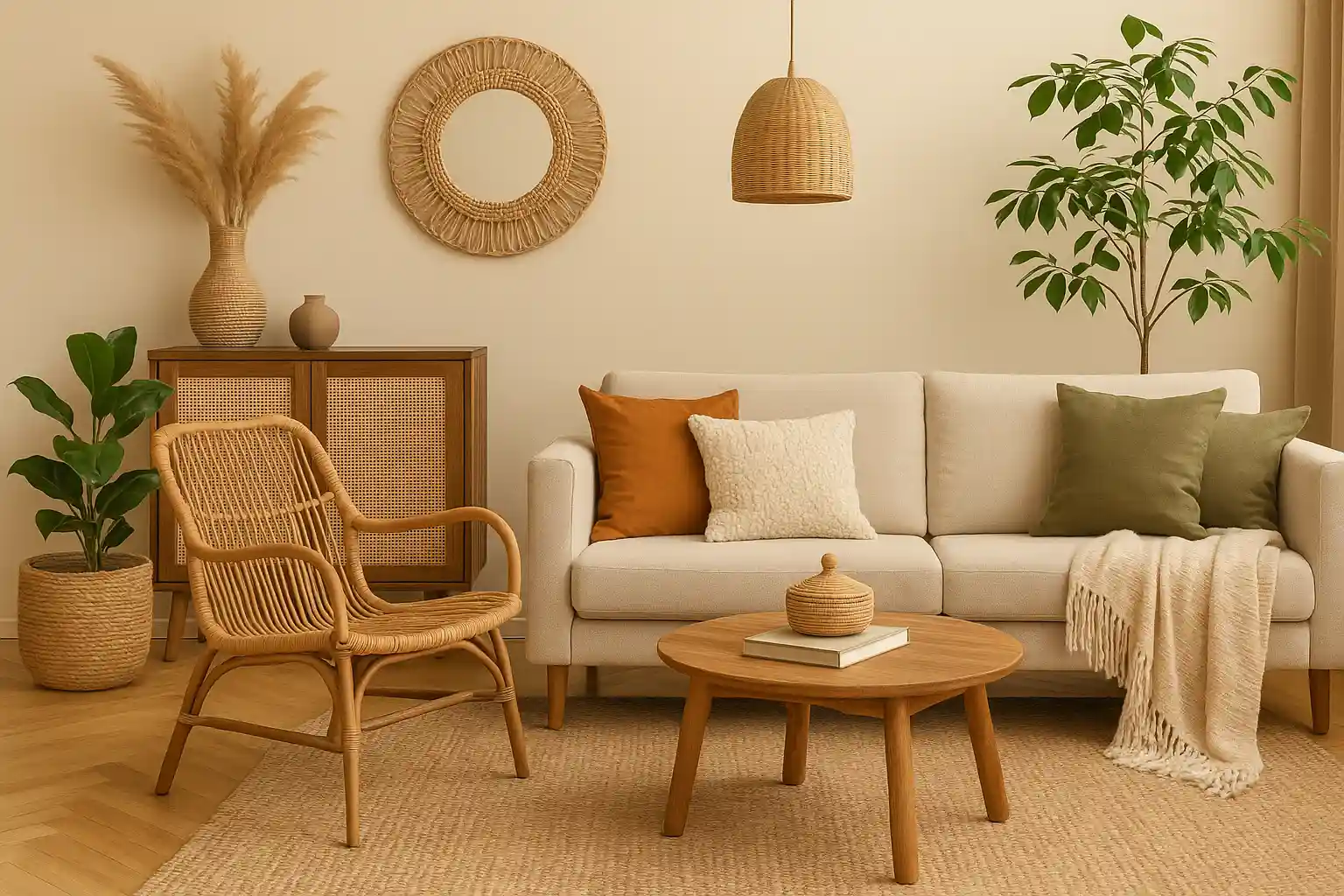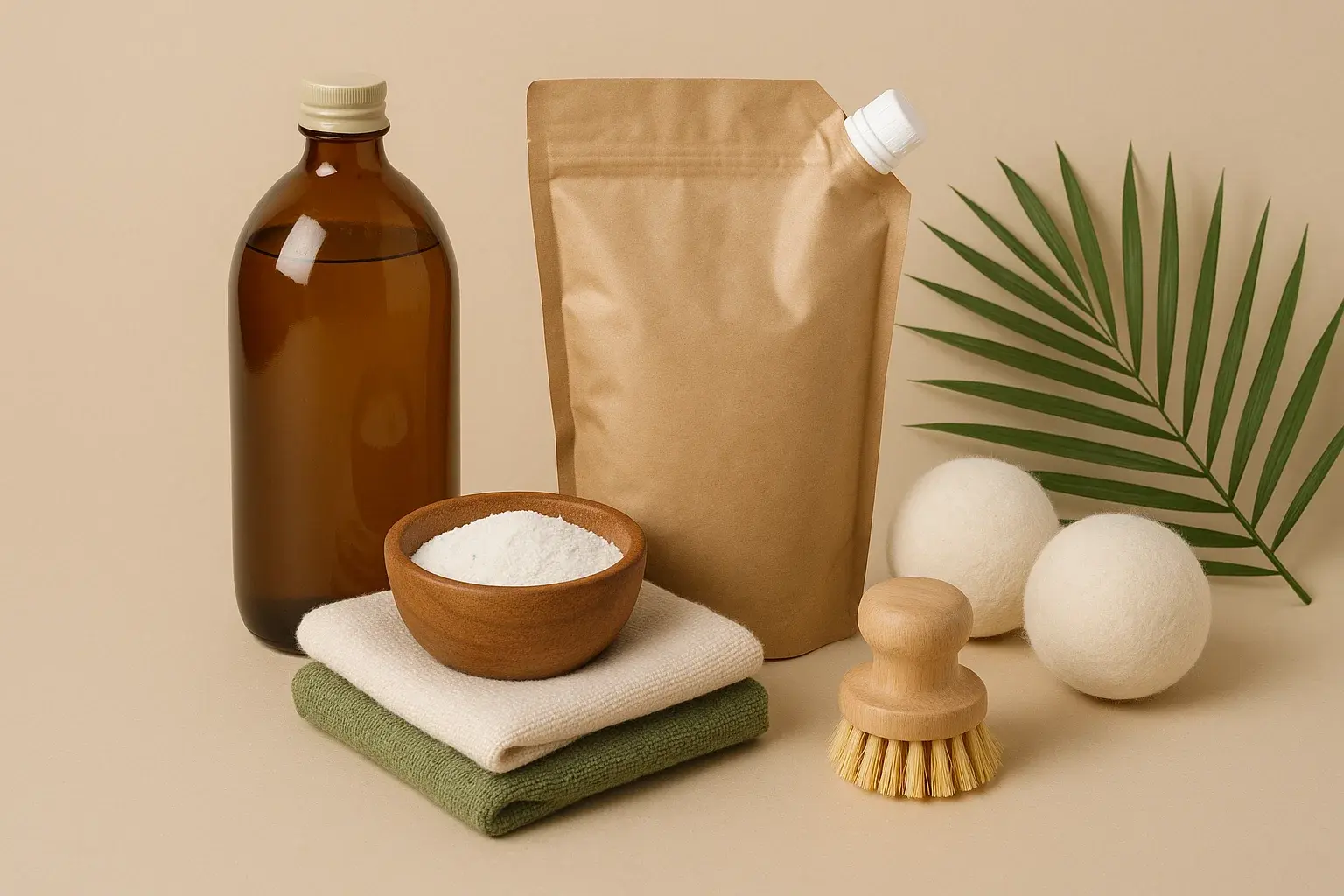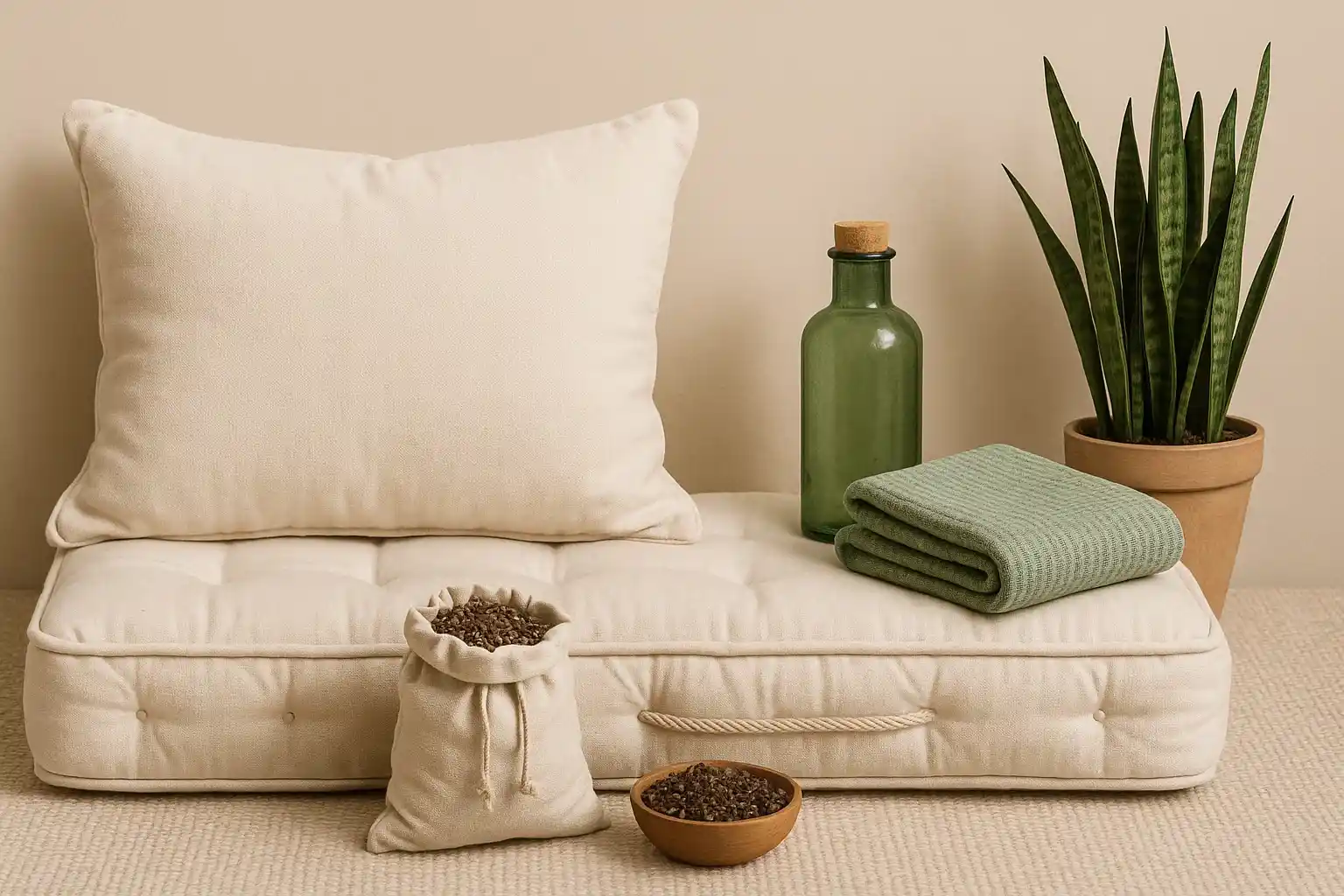5 Home Decor Trends That Nurture Your Space and the Planet

Our homes are reflections of our personal style and values. Increasingly, that includes a desire to live more sustainably. The good news is that you don't have to sacrifice aesthetics to embrace eco-conscious choices in your home decor. In fact, many of today's most appealing trends naturally align with a more earth-friendly approach, allowing you to create a beautiful and responsible living space.
This exploration will delve into five home decor trends that are not only stylish but also inherently kinder to the planet. Our aim is to provide you with valuable insights that will inspire you to decorate your home in a way that reflects both your personal taste and your commitment to sustainability.
1. The Embrace of Natural Materials
One of the most prominent and inherently sustainable trends in home decor is the increasing appreciation for natural materials. Think beyond just wood – consider the resurgence of rattan, jute, bamboo, and cork. These materials are often renewable, require less energy to process compared to synthetics, and bring a wonderful tactile quality and organic warmth to interiors.
- Wood: Opting for sustainably sourced wood, certified by organizations like the Forest Stewardship Council (FSC), ensures that the timber comes from responsibly managed forests. Reclaimed wood is another excellent choice, giving character to your space while preventing perfectly good material from ending up in landfills. Integrate wooden furniture, flooring, and decorative accents to ground your space in nature. The inherent beauty of wood, with its unique grain and texture, adds an element of timelessness to any room.
- Rattan and Wicker: These fast-growing, renewable resources are perfect for furniture, lighting fixtures, and storage solutions. They add a touch of bohemian elegance and are lightweight yet durable. The open weave of rattan and wicker also allows for a sense of airiness in a space, preventing it from feeling too heavy. Consider rattan armchairs, pendant lights, or woven storage baskets.
- Jute and Sisal: These natural fibers are ideal for rugs and baskets, adding texture and earthy tones to your decor. They are biodegradable and require minimal processing. Jute rugs bring a relaxed, organic feel to living areas, while sisal offers a more durable option for high-traffic zones. Natural fiber baskets are both practical and aesthetically pleasing for organizing clutter.
- Cork: A naturally renewable and recyclable material, cork is making a comeback in flooring, wall coverings, and even furniture. It's lightweight, water-resistant, and provides excellent insulation, both thermal and acoustic. Cork flooring is comfortable underfoot, and cork wall panels can add a unique textural element while improving sound quality within a room.
Integrating natural materials into your decor not only brings the beauty of the outdoors in but also supports more sustainable material choices by reducing our reliance on synthetic and often more energy-intensive alternatives.
2. The Allure of Indoor Greenery
Bringing plants into our homes has numerous benefits, both aesthetic and environmental. Indoor plants purify the air, boost our mood, and add a vibrant touch to any space. This trend is inherently earth-friendly, encouraging a connection with nature within our homes.
- Air-Purifying Plants: Species like snake plants, spider plants, peace lilies, and pothos are known for their ability to filter common household toxins such as formaldehyde, benzene, and xylene from the air. Incorporating these into your decor contributes to a healthier indoor environment.
- Vertical Gardens: For smaller spaces, vertical gardens maximize greenery without taking up valuable floor area. They can also have insulating benefits, helping to regulate indoor temperatures slightly. Consider living walls in kitchens or balconies to create a lush and space-saving display.
- Propagating and Sharing: Instead of always buying new plants, try propagating existing ones through cuttings or division and sharing them with friends and neighbors. This fosters a more sustainable and community-oriented approach to plant ownership.
- Choosing Local and Organic: When purchasing plants, consider supporting local nurseries that may have more sustainably grown options, avoiding plants treated with systemic pesticides that can harm beneficial insects.
Embracing indoor greenery not only enhances the visual appeal of your home with natural textures and colors but also contributes to a healthier indoor environment in a natural and sustainable way.
3. The Beauty of Repurposing and Vintage
The "reduce, reuse, recycle" mantra is highly applicable to home decor. Embracing vintage finds and repurposing existing items is a stylish and sustainable way to furnish and decorate your home. This trend gives new life to pre-loved items, reducing the demand for new production and the associated environmental impact of manufacturing and transportation.
- Vintage Furniture: Explore antique stores, flea markets, and online marketplaces for unique, high-quality furniture with character. Often, older furniture was built to last, making it a durable and sustainable choice. A vintage dresser or a mid-century modern armchair can become a statement piece in your home.
- Upcycling Projects: Get creative with items you already own. An old ladder can become a stylish bookshelf, glass jars can be transformed into elegant storage containers or pendant lights, and reclaimed wood can be used to build unique shelving or headboards. Upcycling adds a personal touch to your decor while minimizing waste.
- Secondhand Decor: From artwork and mirrors to decorative objects and tableware, secondhand stores and online platforms are treasure troves of unique and affordable items that have a smaller environmental footprint compared to buying new. A vintage ceramic vase or a framed print can add personality to your space without contributing to new production.
Decorating with repurposed and vintage pieces adds a layer of history and individuality to your home while promoting a more circular economy by keeping valuable items in use for longer.
4. The Focus on Sustainable Textiles
Just as with bedding, the textiles we choose for our upholstery, curtains, and cushions can have a significant environmental impact. Opting for sustainable textiles is a trend that supports both comfort and ecological responsibility.
- Organic Cotton and Linen: As discussed in the context of bedding, organic cotton and linen are excellent choices for upholstery and curtains due to their natural fibers and more sustainable cultivation practices, which avoid harmful pesticides and reduce water usage.
- Recycled Fabrics: Textiles made from recycled plastic bottles or other recycled materials help to divert waste from landfills and reduce the need for virgin resources. These fabrics are increasingly being used for upholstery and even rugs, offering a sustainable alternative without compromising on style or durability.
- Naturally Dyed Fabrics: Choose fabrics dyed with natural pigments derived from plants or minerals, which are less harmful to the environment compared to many synthetic dyes that can release toxic chemicals into waterways.
- Durable Fabrics: Investing in high-quality, durable textiles, regardless of their material, means they will last longer, reducing the need for frequent replacements and the associated environmental impact of producing new textiles.
Selecting sustainable textiles contributes to a healthier home environment by reducing exposure to potentially harmful chemicals and supports a more environmentally conscious textile industry.
5. The Power of Minimalism and Intentional Consumption
While not a material trend, the growing popularity of minimalism inherently aligns with sustainability. By focusing on quality over quantity and intentionally curating the items we bring into our homes, we naturally reduce consumption and waste.
- Decluttering: Regularly decluttering your space helps you identify what you truly need and value, reducing impulse purchases and encouraging a more mindful approach to acquiring new items.
- Investing in Quality: Choosing fewer, high-quality items that are built to last for years is a more sustainable practice than frequently buying cheaper, trend-driven pieces that may not stand the test of time.
- Multifunctional Furniture: Opting for furniture that serves multiple purposes, such as a sofa bed or a storage ottoman, can reduce the overall number of items you need, saving space and resources.
- Conscious Purchasing: Before buying something new, take a moment to consider its environmental impact, its longevity, and whether it truly adds value to your life and your home.
Embracing a minimalist approach encourages a more thoughtful and sustainable way of living within our homes, focusing on what truly matters and reducing our overall consumption footprint.
These five home decor trends illustrate that creating a stylish and comfortable living space can go hand-in-hand with environmental responsibility. By consciously choosing natural materials, incorporating the life-affirming presence of plants, celebrating the beauty of repurposed and vintage items, selecting sustainable textiles, and embracing the principles of minimalism and intentional consumption, we can decorate our homes in a way that reflects both our personal aesthetic and a deep respect for the planet. These trends are more than just fleeting styles; they represent a shift towards a more mindful and sustainable way of inhabiting our spaces.
Related Blogs

Laying the Foundation for a Greener Home: Your Eco Starter Kit
Insights on building an eco starter kit for your home in a sustainable way.

Step Softly on the Earth: Upgrading Your Home with Natural Floor Rugs
Choose biodegradable and non-toxic jute, organic cotton, or wool rugs over synthetic options.

Clean Laundry, Clear Conscience: Sustainable Swaps for Conventional Detergents
Switch to soap nuts, eco-enzyme cleaners, or plant-based detergents for toxin-free laundry.

Breathing Easier, Living Greener: The World of Eco Paints and Finishes for a Healthier Home
Insights on eco paints and finishes for a healthier home in a sustainable way.

Dreaming of a Greener Sleep: Choosing Natural Mattress Toppers for a Healthier Bed
Upgrade your sleep with non-toxic, breathable, and biodegradable latex, organic cotton, or wool toppers.

Smart Storage, Sustainable Spaces: Choosing Eco-Friendly Alternatives to Plastic Trash Cans
Upgrade to durable metal, recycled plastic, or wooden bins for lower impact waste management.
Stay in the Loop
Get tips and insights tailored to your interests — no spam, just sustainability.